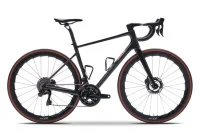Tubeless Road Tire Installation Instructions
TUBELESS ROAD CLINCHER TIRE INSTALLATION ON MODERN WIDE RIMS
Updated: 2/1/2019
Materials needed:
- 2 Tubeless Clincher Road tires
- Tubeless Rim Tape in an appropriate width for your rim (if rim bed has spoke holes – see below)
- 2 Tubeless Valve Kits in an appropriate length for your rim depth
- Tire Sealant – at least 2 oz per wheel
- High pressure air compressor, CO2 inflator or tubeless specific floor pump with installation reservoir.
- Tire levers
- Patience. Some tubeless install easy and your off. Some do not…
While tubeless tires became the standard for mountain bikes some time ago, it has taken a long time for tubeless road tires to really catch on and for there to be a lot of good options. Since the advent of tubeless road tires about ten years ago, there have been some significant changes to rim construction (much wider). How tires were changed on narrower rims can lead to great frustration if attempted on a wider rim, especially with a rigid carbon based bead. With this in mind, here are some hints to make the task a bit easier.
Tubeless Road Tire Installation Step 1 – Rim Tape:
The first step in mounting tubeless road tires is to examine the bed of the rim, where the tube would otherwise sit. If there are holes in the rim, providing access to the spoke nipple, it is necessary to use a rim tape specifically designed for tubeless clincher applications, such as Stan’s NoTubes Rim Tape, so that air will not leak out through those holes. This tape comes in multiple widths. For many road wheels, the required width is 21 mm. However, rim dimensions have changed so much in recent years that you’ll want to check your application. Regardless, the tape must fully cover the holes in the rim and seal the edges so that air cannot escape through the spoke holes in the rims. If your wheels do not have spoke holes, you can skip the next paragraph.
Start installing the tubeless rim tape at the point opposite the hole in the rim for the stem, pressing the tape firmly into the rim and wrapping over the valve hole. I recommend at least two layers of rim tape as that can help prevent the rare occasion where the air pressure in the tire can press the tape into the spoke holes, causing tears in the tape. Once the rim tape is applied, use a sharp Phillips head screw driver or pick to punch a hole through the tape at the stem hole in the rim to allow for the valve stem.
Tubeless Road Tire Installation Step 2 – Mount First Side of the Tire & Insert Valve Stem:
The next step is to mount one side of the tire onto the rim, as you would with any clincher tire. Once one side of the tire is mounted, take the valve stem insert and remove the round nut that is threaded onto the stem. Insert the stem into the stem hole in the rim. However, do not tighten the circular nut, leave the stem loose, so that it can be pushed back up into the tire. The seat of the stem is often oblong. If there is a longer section of the rubber grommet at the base of the stem, be sure that it runs lengthwise with the rim, not across the rim.
Step 3 – Mount Second Side of the Tire. Start at the Stem:
Next, mount the other side of the tire onto the rim, starting at the spoke hole. While this may sound backwards to what you learned on a tubed tire, doing this can be quite important as it allows the bead to settle into the center groove of the rim better and thus effectively loosens the bead on the rim. Once both sides of the bead are seated around the valve stem, push the stem up into the tire so that you can be sure the tire bead is fully seating against the bottom of the rim. Do not rotate the stem in this process.
Move around the rim, pushing the tire onto the rim, until you are opposite the stem. Push the bead fully onto the rim. Note that it helps to make sure the bead around the rest of the tire, on both sides, are sitting in the center groove of the rim. This takes some tension off the bead and thus reduces the tension as you push the final portion of the tire onto the rim.
It is best if you can mount the tire by hand, without using tire irons. However, some combinations can take effort. Use plastic tire irons with care to not damage to carbon fiber bead of the tire or the rim.
Step 4 – Lock the Valve Stem and Bead:
With the fully installed bead, stand the tire up, with the stem at the top. Thread the circular lock nut onto the valve stem, and tighten it against the rim. Using a pair of pliers, pull the stem firmly away from the rim so that the seal on the inside of the tires seats tight against the inside of the rim, and tighten the nut by hand until it is tight against the rim. Do not use pliers or other tools to twist the nut. You want to be able to remove it by hand in the event you have a flat tire on the road.
Tubeless Road Tire Installation Step 5 – Add Sealant:
The next step is adding sealant. Sealant is available from a variety of brands and it is normally not a great idea to mix them. We’ve tried a number of brands. Our current “go to” is Orange Seal Endurance.
The goal of the sealant is to first seal the bead of the tire against the rim. Second, it provides some protection against small punctures that would otherwise cause a flat tire. There are granular particles in the fluid, and you want to be sure they are distributed throughout the sealant, so shake the sealant before use.
Sealant can either be added by peeling the bead back on one side and dumping it in. However, the cleaner (and recommended) way to do it is to remove the valve core and then use a tube applicator with the sealant (many come with this) to inject the sealant into the tire via the hollow valve stem. So, remove the valve core and inject 2-3 ounces of sealant inside the tire – even a little more if you are using a particularly high volume gravel tire. I often bias things towards a little more sealant rather than a little less. You want the tire to seal initially upon inflation.
Step 6 – Distribute Tire Sealant:
Once the valve stem is tight and the valve core reinstalled to keep the sealant in the tire, distribute the sealant around the tire. Be sure that the bead is fully mounted all the way around the rim on both sides, then hold the wheel vertically, spinning it slowly to spread the sealant around the entire the tire. If you do this carefully, you won’t lose much. If you are careless, you may have a mess on your hands.
Tubeless Road Tire Installation Step 6 – Inflate the Tire and Set the Bead:
You are now ready to inflate the tire. It can sometimes be difficult to get enough air into the tire so that the bead seals using a regular floor pump. An air compressor works best to get the tire bead to seat against the rim. Another alternative is to use a CO² inflator or one of the high volume/high pressure tubeless floor pumps. Tubeless tire beads often make loud “pop”/cracking noises as they seat. This can be a bit alarming, but helps you know that things are seating properly.
As the tire bead seals against the rim, you may see some sealant leak out around the rim. This is normal, and should be wiped off after the tire bead has fully set. You may need to over-inflate the tire some initially to get it to seat. Once seated, double check the bead and reduce your tire pressure to the recommended range for your weight and tire and then go for a ride to allow the sealant to spread throughout the tire and seal any small leaks, as well as insuring that the tire bead has seated properly. If you can’t ride right away, spin the wheel an shake it to distribute the sealant.
Why is My Tubeless Tire Not Holding Air…
If the tire will not hold air at this point, the first place to check is to make sure that the valve stem is seated properly and is tight enough. Check to be sure that the bead of the tire around the stem is seating well against the rim, is not being blocked by the stem, and that the rest of the tire bead is seating against the rim. Also check to be sure that the stem is pulled down tight, and the circular nut is tight. Reinflate the tire. If the tire will still not hold air, it is either the rim strip is not sealed against the rim or the bead is not setting.
Don’t forget that you can run the air pressure of your tubeless tires lower than a tubed tire without risking pinch flats, so experiment a bit. Especially on wider tires on wider rims, the tire pressure can be much lower than your previous tubed version.
Enjoy the fruits of your labor. A high quality tubeless road tire offers a smooth and fast ride that is more puncture resistant to boot.









